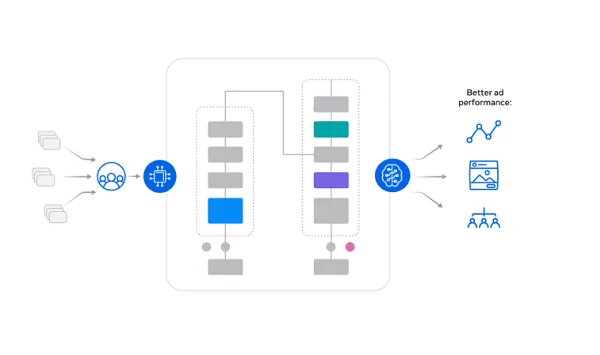Credit cards have become an integral part of modern-day society. They have revolutionized the way people shop, travel, and spend their money. However, the concept of credit cards is not new, and their evolution over the years has been quite remarkable.
The history of credit cards can be traced back to the 1920s when oil companies and hotel chains issued their own proprietary cards to their customers. These cards were primarily used for purchases within their respective establishments and were not widely accepted elsewhere. It wasn’t until the 1950s that the first universal credit card, Diners Club, was introduced. This card allowed customers to make purchases at a variety of establishments and pay a single bill at the end of the month.
Since then, credit cards have come a long way. Today, there are countless credit card companies offering a range of products with different features and benefits. The evolution of credit cards has been driven by advancements in technology, changing consumer needs, and intense competition among credit card issuers. This article will delve deeper into the history of credit cards and explore how they have evolved over time.
The Origins and Early Development of Credit Cards
Ancient and Medieval Predecessors to Credit
Credit cards are an essential part of modern-day commerce, but the concept of credit is not a new one. The origins of credit can be traced back to ancient civilizations such as Mesopotamia and the Harappan civilization, where clay tablets and metal plates were used to record transactions. In medieval Europe, merchants used bills of exchange as a form of credit, which allowed them to conduct business with customers without the need for physical currency.
One of the earliest known legal codes, the Code of Hammurabi, established regulations for lending and borrowing in ancient Babylon. It set limits on interest rates and outlined penalties for those who failed to repay their debts. These early forms of credit laid the foundation for the development of modern credit cards.
The Inception of Modern Credit Cards
The modern credit card was first introduced in the mid-20th century. In 1950, Frank McNamara founded Diners Club, which issued charge cards to its members. The charge card allowed customers to make purchases at participating merchants and pay off their balance in full each month.
In 1958, Bank of America launched BankAmericard, which later became Visa. BankAmericard was the first credit card to be issued nationwide and allowed customers to carry a balance from month to month, paying interest on the outstanding balance.

Technological Advances and the Expansion of Credit
The introduction of the magnetic strip in the 1970s revolutionized the credit card industry. The magnetic strip allowed for the storage of customer data, making transactions faster and more secure. In 1979, Master Charge, which later became Mastercard, introduced the first credit card with a magnetic strip.
In the 1980s, the Interbank Card Association, which later became known as Mastercard, and Visa introduced the EMV chip, which offered even greater security for credit card transactions. The chip stores customer data on a microchip embedded in the card, making it more difficult for fraudsters to steal customer information.
Today, credit cards are a ubiquitous part of modern life, with millions of people using them to make purchases every day. The evolution of credit cards has been driven by technological advances and changes in consumer behavior, and it is likely that credit cards will continue to evolve in the years to come.
Regulations and Innovations Shaping the Future
The credit card industry has undergone significant transformations over the years, and the future looks promising with the introduction of new regulations and innovations. This section examines the legislative milestones, technological evolution, and security enhancements that are shaping the future of credit cards.
Legislative Milestones in Credit Card History
The credit card industry is heavily regulated to protect consumers from predatory practices and ensure fair competition among issuers. The Truth in Lending Act (TILA) of 1968 was a significant milestone in credit card history, as it required issuers to disclose the cost of credit in a standardized format, enabling consumers to make informed decisions.
The Fair Credit Reporting Act (FCRA) of 1970 and the Fair Credit Billing Act (FCBA) of 1974 provided additional protections to consumers by regulating credit reporting agencies and billing disputes, respectively. The Equal Credit Opportunity Act (ECOA) of 1974 prohibited discrimination in credit decisions based on factors such as race, gender, and marital status.
The Credit Card Accountability Responsibility and Disclosure (CARD) Act of 2009 was a game-changer, as it introduced several consumer-friendly provisions, such as limiting fees and interest rate increases, requiring clear disclosures, and restricting marketing to college students.
Technological Evolution and Security Enhancements
The introduction of EMV chips in credit cards was a significant technological advancement, as it reduced the risk of fraud by replacing magnetic stripes with embedded microchips that generate unique transaction codes. Contactless payments, which use near-field communication (NFC) technology, have also gained popularity, as they offer convenience and speed. Check out credit card size for more info.
Digital wallets such as Apple Pay and Google Pay have revolutionized the payment landscape by allowing users to store their credit card information securely on their smartphones and make payments with a simple tap or swipe. Virtual credit cards, which generate one-time-use card numbers for online transactions, have also gained traction due to their enhanced security.
Biometric authentication, such as fingerprint and facial recognition, is becoming more prevalent in credit card security, as it offers a more secure and convenient way to authenticate users. Encrypted communication is also becoming standard practice, as it ensures that sensitive information is transmitted securely and cannot be intercepted by hackers.
The Emergence of Digital and Mobile Payment Solutions
The future of credit cards is increasingly digital and mobile, with more consumers adopting digital and mobile payment solutions. Mobile payments, which allow users to make payments using their smartphones, are expected to grow significantly in the coming years, with estimates suggesting that mobile payments will reach $503 billion by 2020.
The emergence of digital and mobile payment solutions has also given rise to new players in the payment industry, such as fintech startups and digital-only banks. These players are disrupting the traditional banking industry by offering innovative solutions that are more convenient, faster, and cheaper than traditional banking services.
In conclusion, the credit card industry is evolving rapidly, with new regulations and innovations shaping the future. Consumers can expect more convenience, security, and innovation in the years to come, as the industry continues to adapt to changing consumer preferences and technological advancements.








































![Spider-Man Is Back in Black With the Green Goblin in New Funko Pop! Figures [Exclusive] Spider-Man Is Back in Black With the Green Goblin in New Funko Pop! Figures [Exclusive]](https://static1.colliderimages.com/wordpress/wp-content/uploads/2025/03/spider-man-the-animated-series-green-goblin.jpg)
































